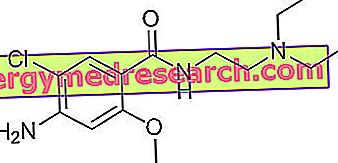Sorghum
When we talk about sorghum (also called Broom Corn ) we refer to a group of Cereal species belonging to the Genus Sorghum and to the family of the Poaceae (Gramineae); among these, the most well-known, because it is intended for human consumption, is the vulgare . The binomial nomenclature of sorghum destined for human nutrition is Sorghum vulgare .

In the past, sorghum cultivation was much more important than today; this is justifiable by the fact that, at one time, agrarian technologies did not allow a sufficiently efficient irrigation and, unlike many others, this plant was able to resist drought brilliantly. Today, this crop has been largely replaced by corn, although, in Somalia and Eritrea, it still constitutes a primary source of income.
As can be deduced from what has been said so far, sorghum can have numerous applications. The one intended for human consumption is reduced to flour and destined for bread making. On the other hand, it appears that its frequent and systematic consumption may increase the chances of hepatocellular carcinoma due to the high quantity of a "cyanogenic glucoside" responsible for the release of hydrocyanic acid . Some, however, claim that this poisonous characteristic can be completely inactivated by means of the water maceration of the seeds.
Sorghum flour
Sorghum flour does NOT contain gluten, therefore it is suitable for the consumption of celiac (gluten-free). On the other hand, it is always a good idea to check the label of the product which, if worked in mixed plants, could contaminate itself with gluten and become unsuitable for the celiac disease diet.
Sorghum flour, also called "durra flour", is light, yellowish-white in color. It is fine to the touch and has a slight hygroscopy (absorbs moisture from the environment). The starch granules appear similar to those of maize, a cereal with which sorghum shares most of the nutritional profile.
The flour is used as a bread-making base in Africa, in some places in South Asia and in some countries of Central America (to produce products similar to piadine, as it does NOT rise). There are also various parallel applications, such as the manufacture of ethyl alcohol or a sort of beer (the latter, in Eritrea). In Italy, sorghum flour is almost completely unknown (even if it is grown in small quantities) and can be mixed with wheat to create mixtures of little strength (2 parts of wheat and 1 part of sorghum).
Sorghum flour was frequently used for illicit manipulation of wheat flour; on the other hand, such counterfeiting is easily recognizable with a microscopic analysis of the starch granules.
Sorghum flour is readily available from organic, macrobiotic, vegan etc. retailers. It is found predominantly in an integral form and, taking for granted the absence of hydrocyanic acid, it would be interesting to understand how (on an industrial level) it is rendered totally harmless to humans.



